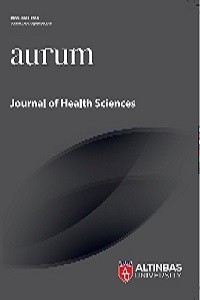Nano Formulations as Drug Delivery Systems
nano particles, nanotechnology, drug delivery systems
Nano Formulations as Drug Delivery Systems
nano particles, nanotechnology, drug delivery systems,
___
- Allen, L., & Ansel, H. C. (2013). Ansel's pharmaceutical dosage forms and drug delivery systems. Lippincott Williams & Wilkins.
- Allen, T. M., & Cullis, P. R. (2013). Liposomal drug delivery systems: from concept to clinical applications. Advanced drug delivery reviews, 65(1), 36-48.
- Anwekar, H., Patel, S., & Singhai, A. K. (2011). Liposome-as drug carriers. International journal of pharmacy & life sciences, 2(7).
- Asgher, M., Qamar, S. A., & Iqbal, H. (2021). Microbial exopolysaccharide-based nano-carriers with unique multi-functionalities for biomedical sectors. Biologia, 76(2), 673-685. Deirram, N., Zhang, C., Kermaniyan, S. S., Johnston, A. P., & Such, G. K. (2021). pH‐responsive polymer nanoparticles for drug delivery. Macromolecular rapid communications, 40(10), 1800917.
- Derman S, Kızılbey K, Akdeste Z., (2013). Polymerıc Nanopartıcles. Journal of Engineering and Natural Sciences Mühendislik ve Fen Bilimleri Dergisi Sigma; 31, 109- 122.
- Dong, X. (2018). Current strategies for brain drug delivery. Theranostics, 8(6), 1481.
- Dreaden, E. C., Alkilany, A. M., Huang, X., Murphy, C. J., & El-Sayed, M. A. (2012). The golden age: gold nanoparticles for biomedicine. Chemical Society Reviews, 41(7), 2740-2779.
- Eşim, Ö. (2020). Platine dirençli over kanseri tedavisine yönelik nanopartiküler ilaç taşıyıcı sistemlerin geliştirilmesi ve değerlendirilmesi.
- Fung, L. K., & Saltzman, W. M. (1997). Polymeric implants for cancer chemotherapy. Advanced drug delivery reviews, 26(2-3), 209-230.
- Francia, V., Reker-Smit, C., Boel, G., & Salvati, A. (2019). Limits and challenges in using transport inhibitors to characterize how nano-sized drug carriers enter cells. Nanomedicine, 14(12), 1533-1549.
- Ge, X., Wei, M., He, S., & Yuan, W. E. (2019). Advances of non-ionic surfactant vesicles (niosomes) and their application in drug delivery. Pharmaceutics, 11(2), 55.
- Kolate, A., Baradia, D., Patil, S., Vhora, I., Kore, G., & Misra, A. (2014). PEG—a versatile conjugating ligand for drugs and drug delivery systems. Journal of controlled release, 192, 67-81.
- Kontermann, R. (2012, March). Dual targeting strategies with bispecific antibodies. In MAbs (Vol. 4, No. 2, pp. 182-197). Taylor & Francis.
- ISSN: 2651-2815
- Yayın Aralığı: Yılda 3 Sayı
- Başlangıç: 2018
- Yayıncı: Altınbaş Üniversitesi
Diagnosis and Treatment Methods of Autoimmune Myasthenia Gravis: A Systematic Review
Melike Nur YANGIN, Yaşar ZORLU, Feride SEVERCAN
Özgül ÖZKOÇ, Zuhal ÇAYIRTEPE, İnci OKTAY
Determination of Radiation Exposure of Students During Their Internships Using OSL Dosimeter
Handan TANYILDIZI KÖKKÜLÜNK, İrfan AYDIN, Özlem YILDIRIM
